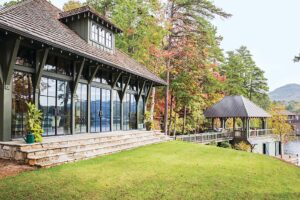If you’ve ever looked at pictures of the Tarsar Marsar lakes in Kashmir and thought, “That doesn’t even look real,” trust me—you’re not alone. I had that exact thought before doing the trek myself. And let me tell you, nothing comes close to standing in front of those mirror-like lakes surrounded by rolling meadows and towering mountains. But timing is everything with this trek. You hit the wrong month, and you either walk into walls of snow or a soggy mess of trails. So, here’s the no-fluff guide on the best time to do the Tarsar Marsar trek—and exactly what to expect when you’re out there.
Best Time to Do the Tarsar Marsar Trek
Mid-June to Late September: The Sweet Spot
This is hands down the best window to plan your trek. June to September hits that perfect balance when the snow has melted enough for safe passage, the wildflowers are in bloom, and the weather stays mostly friendly. You’ll see everything the trail has to offer—lush meadows, pine forests, shepherd huts, alpine lakes—all without freezing your fingers off or sloshing through endless mud.
Let me break this down month by month, so you can decide what kind of vibe you’re after.
June: The First Look After Winter
If you like fewer crowds and don’t mind patches of snow here and there, June is a great time. Early in the month, you might still see snow on the higher ridges and the trail might have cold water streams running across. But on the plus side, everything feels fresh, raw, and almost untouched. You’ll likely be among the first few groups of the season, so expect solitude and that “explorer” kind of feeling.
Do pack well, though. Nights are chilly—I’m talking layers, thermals, and a good sleeping bag.
July: Meadows and Bloom
This is where things start to feel like a fairytale. The meadows—Lidderwat, Shekwas, and the plains before Tarsar Lake—explode in colors. Flowers you didn’t know existed will bloom right under your boots. The snow’s mostly gone, making the trek easier and more accessible for most fitness levels.
However, since it’s peak beauty season, it’s also peak trekking season. You’ll meet more groups, more solo trekkers, and lots of chatter around campfires. I personally didn’t mind it—the shared stories and energy added to the experience. But if you’re someone who prefers absolute silence, you might want to aim for late June or early September instead.
August: Clear Skies and Blue Lakes
August is when the lakes turn into mirrors. With fewer rain spells and clear skies, Tarsar and Marsar reflect every peak and cloud like a painting. It’s hard to describe in words—pictures won’t do it justice either, you have to be there.
Keep in mind, Kashmir does get some monsoon showers, but it’s not like the downpours in Himachal or Uttarakhand. The region sits in a kind of rain-shadow zone, so you might just see a few light drizzles and misty views, which actually add to the mood.
One piece of advice—carry waterproof bags or covers for your backpack and essentials. No one wants damp clothes at 11,000 feet.
September: Golden Grass and Fewer Trekkers
September has its own charm. The meadows lose their bright green coat and turn golden. The lakes are still stunning, but the trail gets quieter. It’s a great time if you want that peaceful, reflective trek.
By mid to late September, nights become significantly colder. There’s also a higher chance of early snowfall by the month’s end, especially around Marsar Lake. So don’t push it too late into the month unless you’re experienced with mountain weather.
What to Expect on the Tarsar Marsar Trek
Moderate Challenge, Maximum Reward
Tarsar Marsar isn’t one of those death-defying treks. If you’ve got decent fitness and some hiking experience, you’re good to go. Expect 6-7 days of walking, with a max altitude of around 13,000 feet. The climb to the Marsar ridge is probably the toughest bit, but it’s manageable with slow, steady steps.
You’ll pass through thick forests, open valleys, stream crossings, and boulder patches. And then there’s the campsites—some of the best I’ve ever stayed at. Imagine setting up your tent next to a lake that is fed by glaciers, with untamed horses grazing nearby. It’s surreal.
Packing Tips Based on the Season
-
June to July: Pack thermals, fleece layers, and waterproof shoes. Snowmelt streams can soak your socks in minutes.
-
August: Rain gear is essential. A poncho or rain jacket and dry sacks for electronics and clothes.
-
September: More layers for nighttime, especially gloves, beanie, and a good down jacket.
Guided Trekking: A Safer, Smoother Experience
Now, I’ve done a few treks solo, but for Tarsar Marsar Trek
, I’d strongly recommend going with a guided group—especially if it’s your first time in Kashmir. One company I’d quietly suggest checking out is The Searching Souls (TSS). They’ve been doing this circuit for years and handle everything from permits to food and safety.
I went with them on my first Kashmir trek and honestly, they made it smooth. The guides knew the terrain like the back of their hand, and it felt more like a close-knit hiking club than a commercial group.
You’ll also get to meet fellow trekkers, share stories, and not worry about logistics. That, in itself, is worth it.
In a Nutshell
Aim for mid-July to mid-August if you want to experience the Tarsar Marsar Trek at its best. That’s when the weather, landscape, and trail conditions hit a perfect balance. June and September are great too, especially if you prefer fewer people.
And remember—this isn’t just a trek. It’s a visual and emotional journey. You’ll leave with photos, yes, but also a head full of memories and a heart that’s going to want to come back.
FAQs
1. Is the Tarsar Marsar trek beginner-friendly?
Yes, if you’re reasonably fit and can walk 6-7 hours a day. No technical skills required.
2. How many days is the trek?
Typically 7 days including arrival and departure. The trekking itself is about 5 days.
3. Is a permit required for this trek?
Yes, especially since it’s in Kashmir. Guided companies like TSS handle this for you.
4. Can I do this trek solo?
It’s possible but not advisable unless you’re experienced with high-altitude trekking in Kashmir. Navigation and safety are real concerns.
5. What’s the one thing not to forget?
Waterproofing gear. Even if it doesn’t rain, river crossings and dew can soak your stuff.



